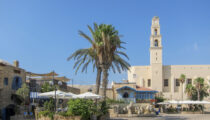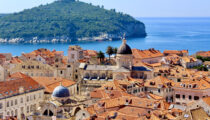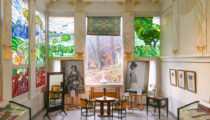September 15, 2011
Just Back: Botswana’s Kalahari Desert
We just returned from an incredible safari in the Kalahari Desert, Botswana, that featured staying at a 1940s-style luxury safari camp, excursions into the desert with expert local trackers and great wildlife spotting during game drives.
This aerial view reveals the landscape’s incredible textures. If you look closely, you can see a small herd of zebras drinking in the middle of the water hole. The white lines mark the regular paths the animals take to the water source.
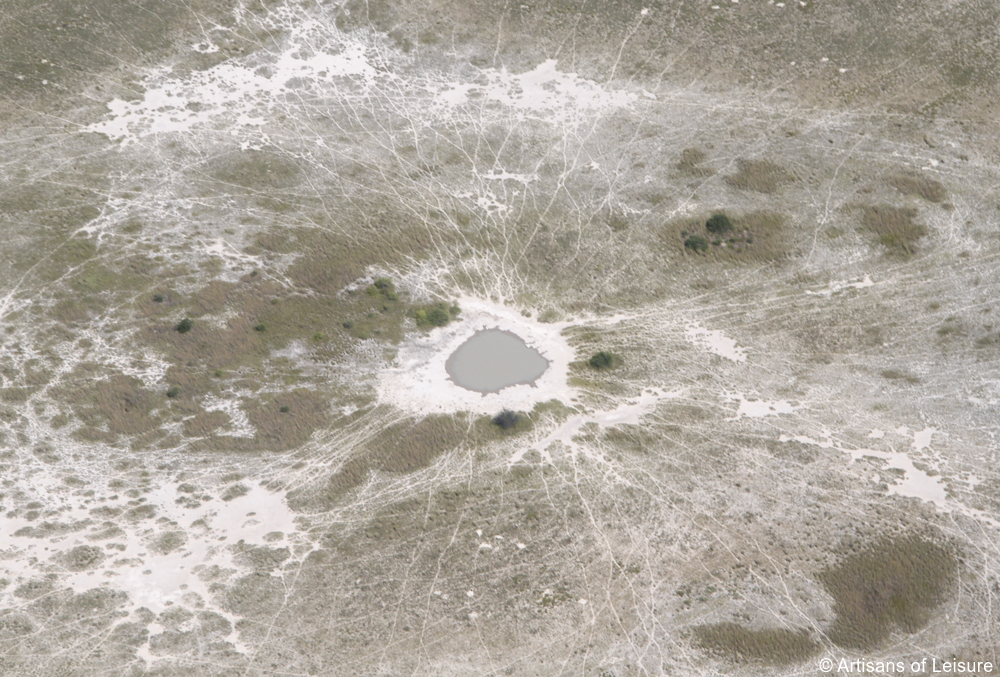
Our private tours include a stay at Jack’s Camp, our favorite property in Botswana’s Kalahari Desert. Right in the heart of the Makgadikgadi Pans, it has 10 free-standing tents nestled in the bush.
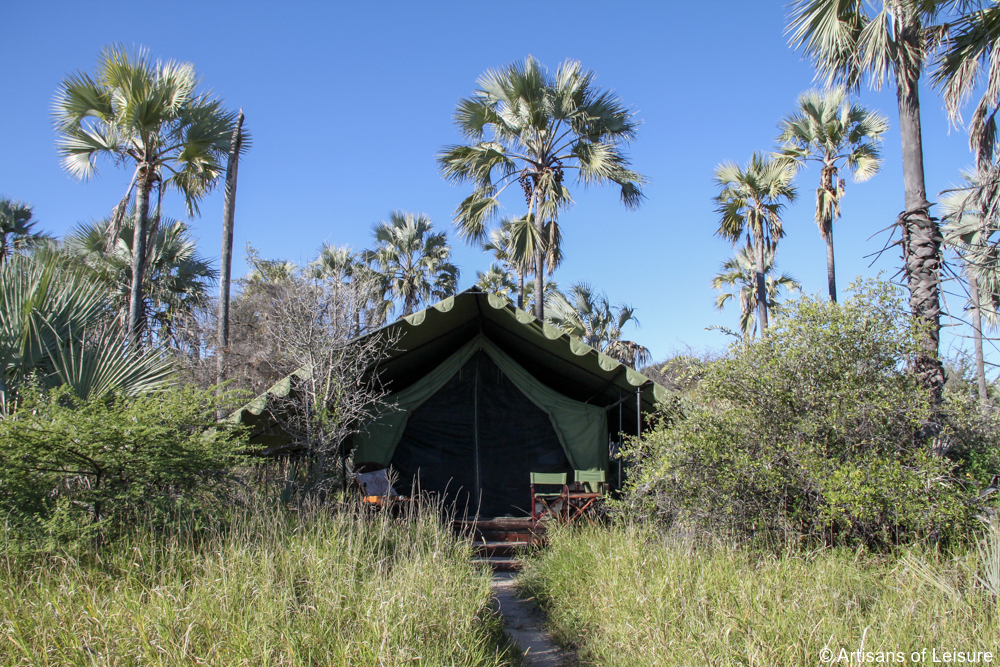
The decor at Jack’s Camp evokes a 1940’s-style safari camp. The interior of each canvas tent is beautifully decorated with antique furniture, colorful textiles, hardwood floors and Persian rugs. They also have private verandas and en-suite bathrooms with indoor and outdoor showers.
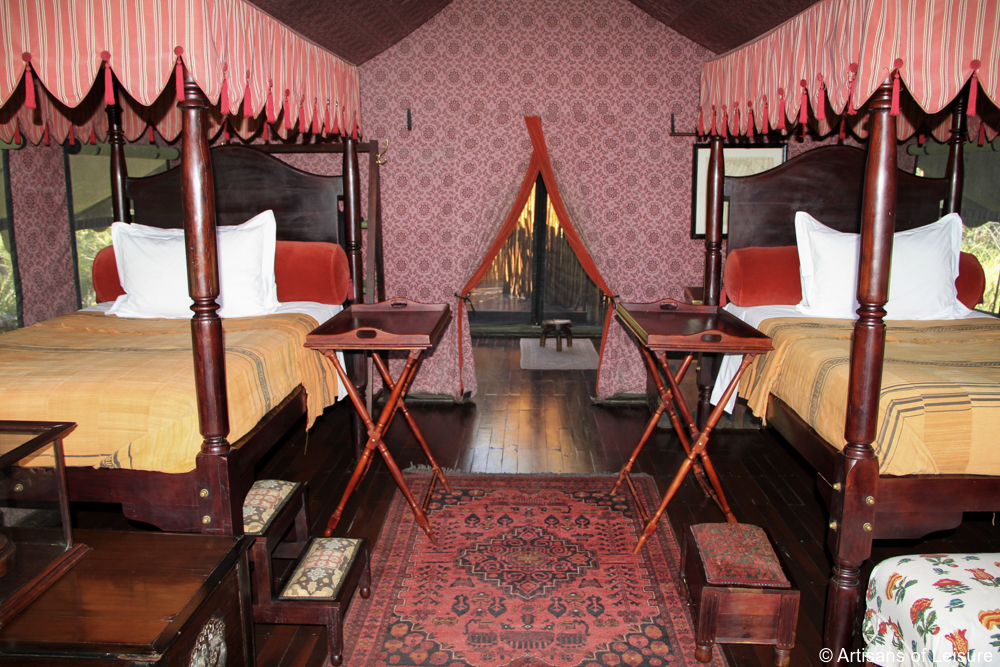
The outdoor pool pavilion is a favorite place to relax.
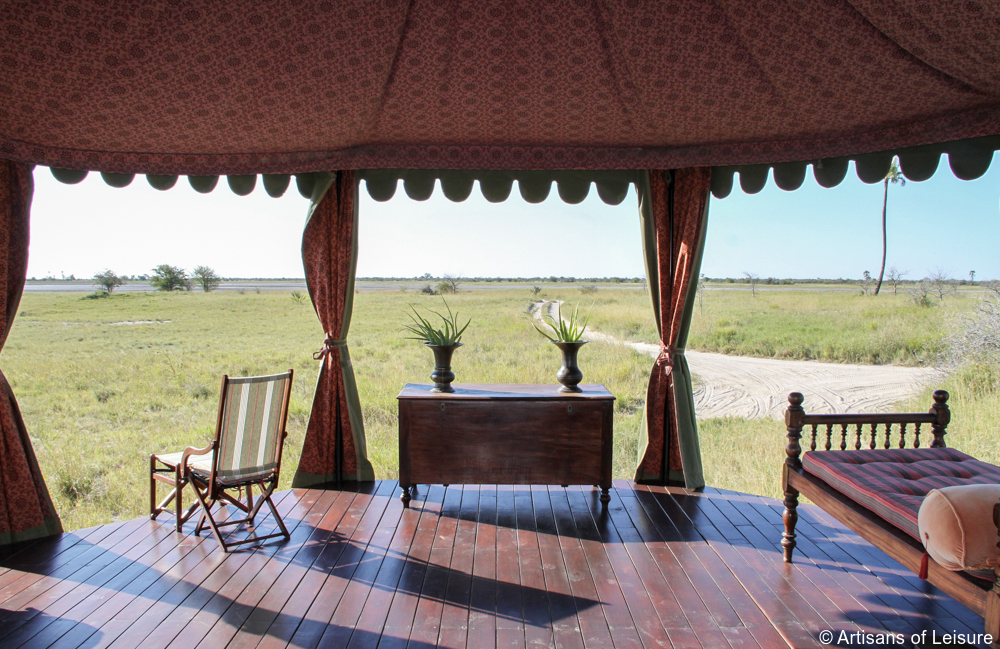
This is the main pavilion and dining area.
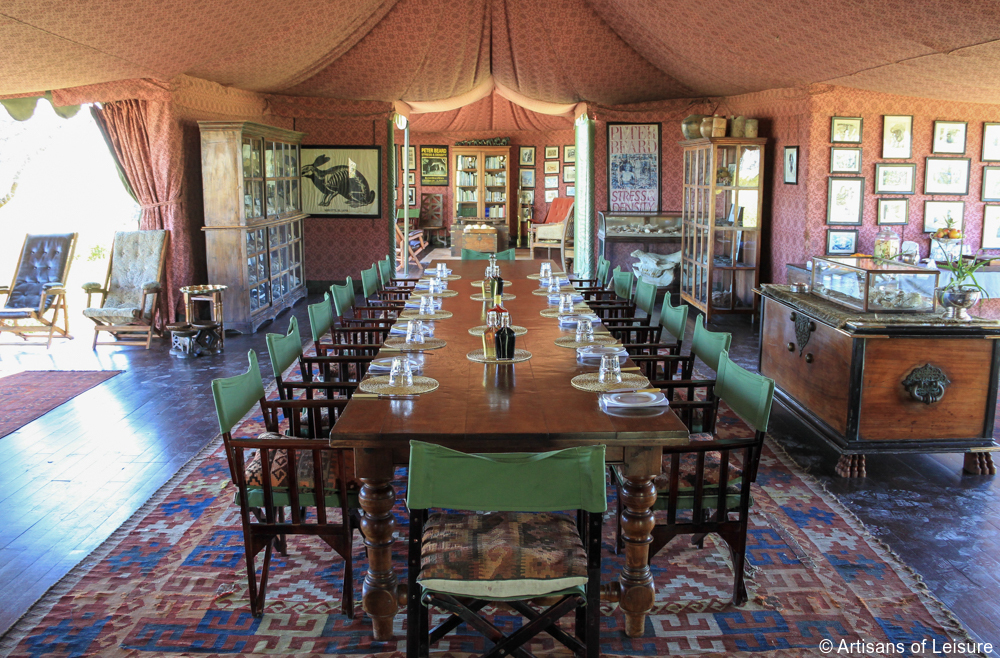
A highlight of touring in Botswana’s Kalahari Desert is the opportunity to spend quality time with a habituated, yet wild, family of meerkats.
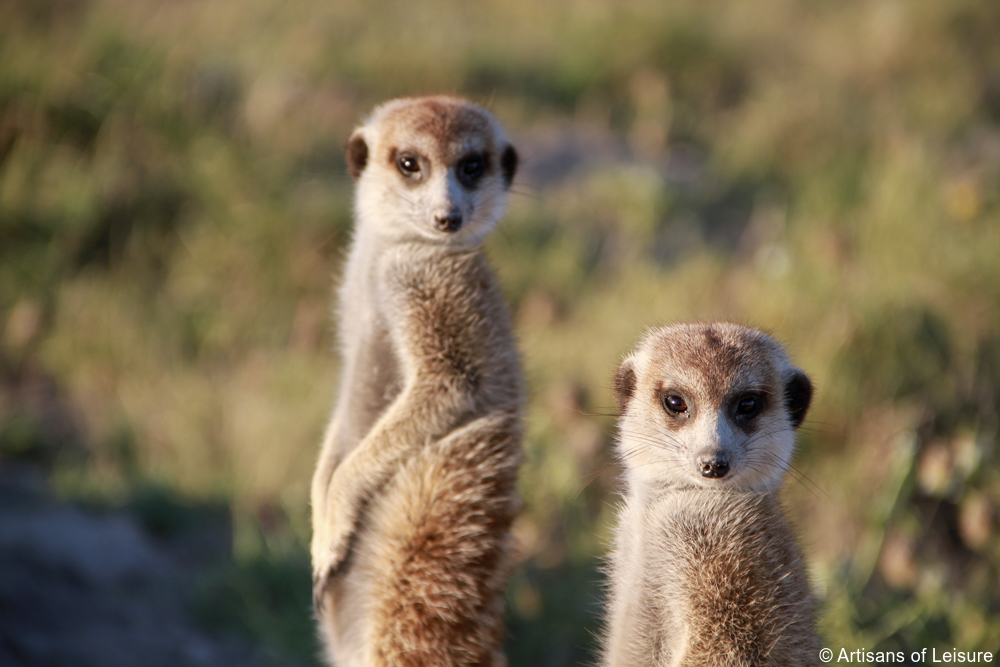
The soft sand of the Kalahari is perfect habitat for these burrowing animals. Visitors can watch the daily activities of the meerkats up close.
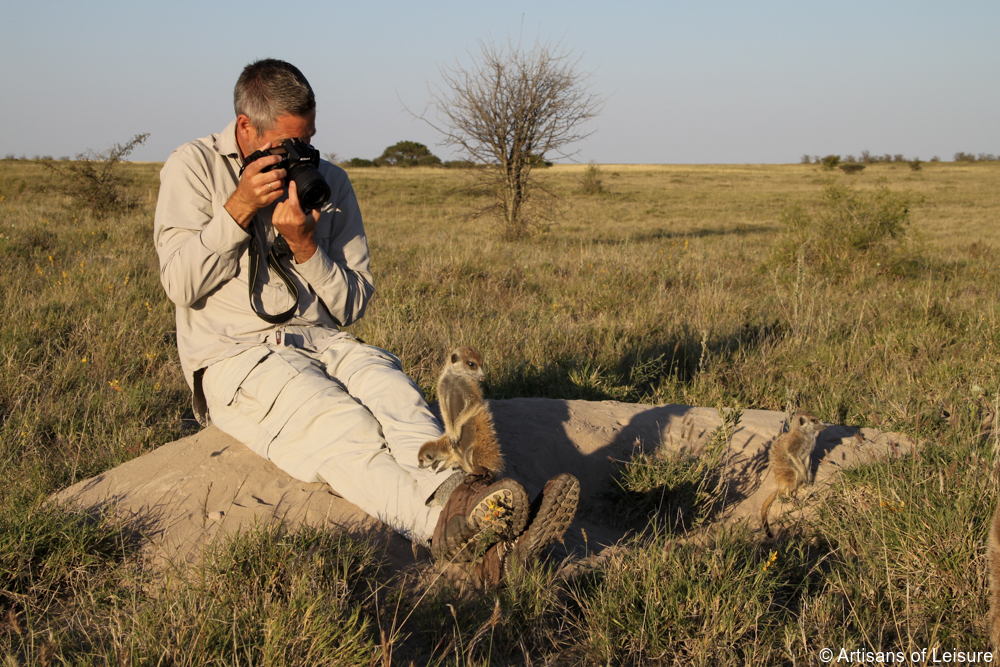
Our tours of the Kalahari include an excursion in the salt pans with Zu/’hoasi trackers, who explain the methods they use to survive in this unique and often harsh environment.
The Zu/’hoasi, also spelled Ju/’hoansi, are part of the San Bushmen group of indigenous people.
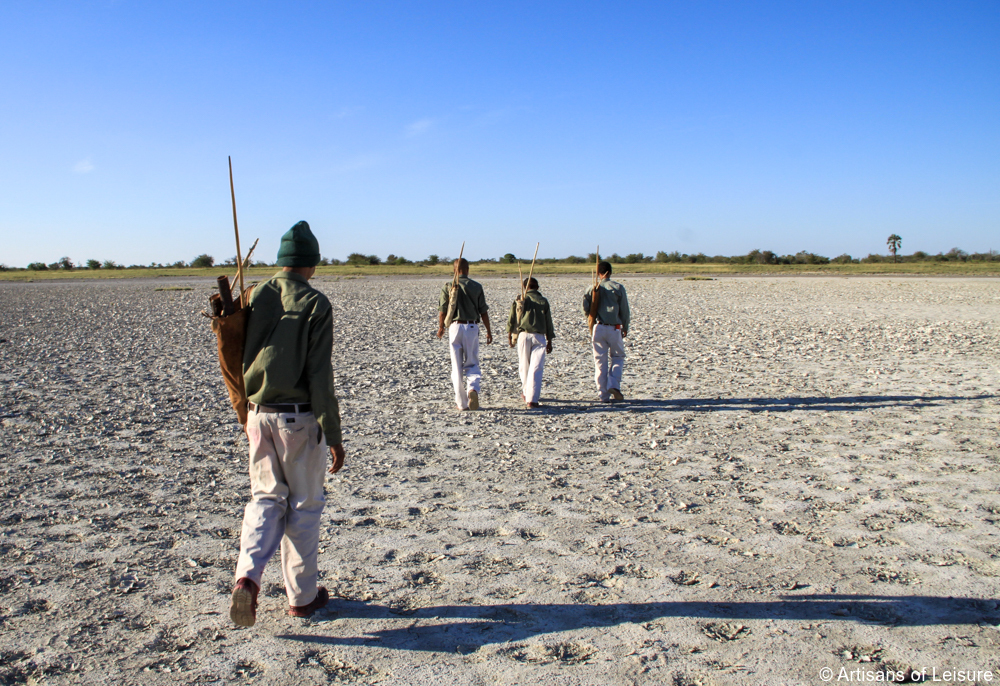
During the excursion, the trackers stop to examine animal tracks and droppings. They can determine the type of animal, what it had eaten, where it was going and when it had passed by.
This tracker shows how to set a trap for capturing small animals…
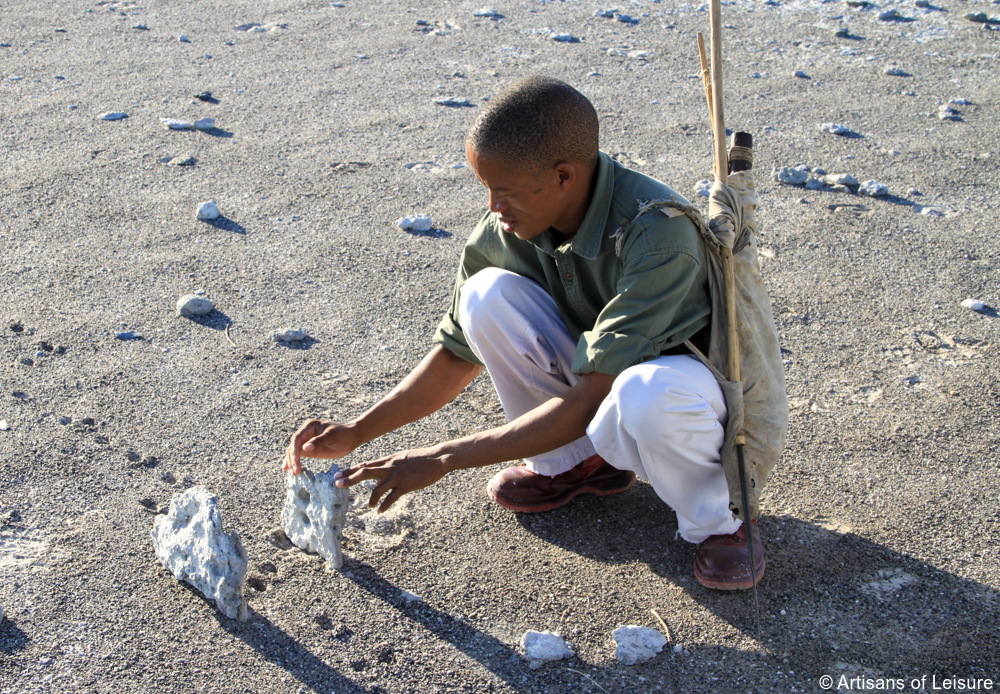
…and how to make a sun hat out of the salt encrustations from the pan.
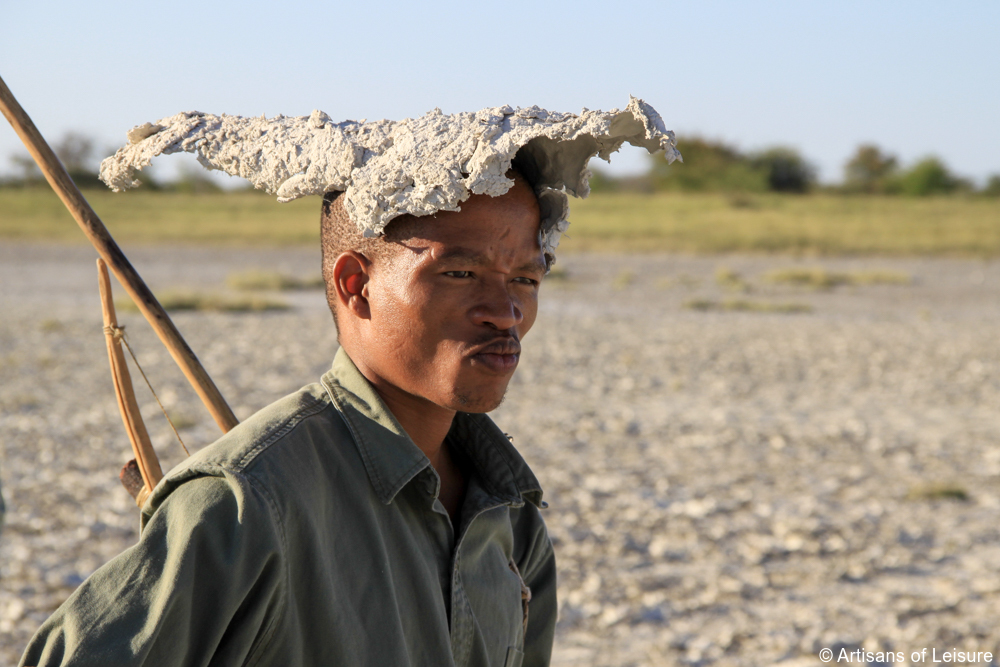
Along the way, the trackers identify various plants and roots, explaining how they are used for medicine, food and even water—keys to surviving in the dry, unforgiving environment.
One such plant is hoodia, a succulent that grows in the area. The San people cut off and chew on the stems, which act as a thirst quencher and appetite suppressant.
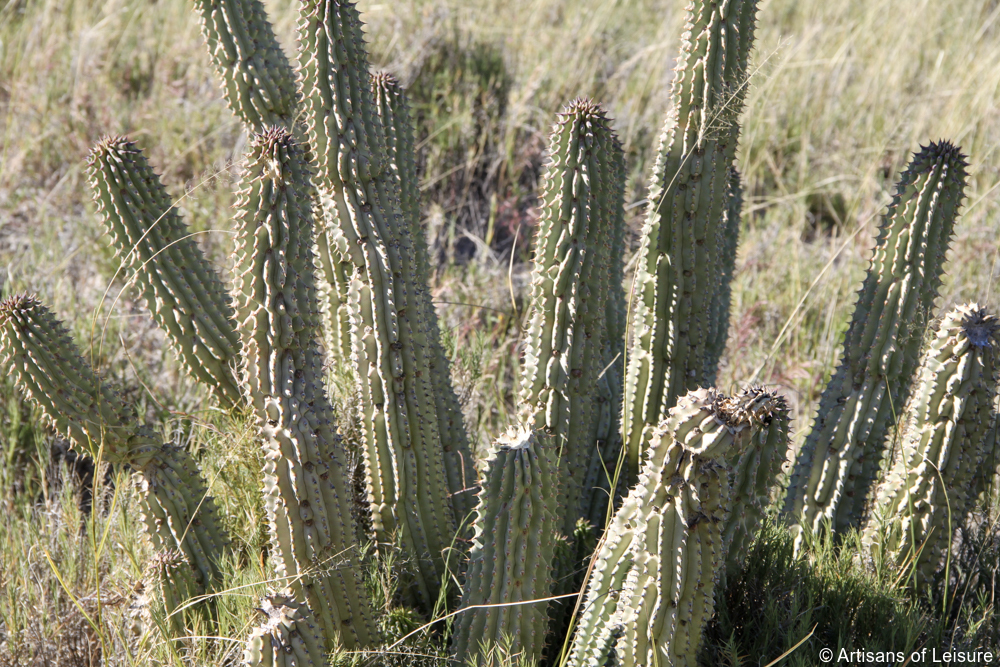
Even the smallest creatures are fascinating.
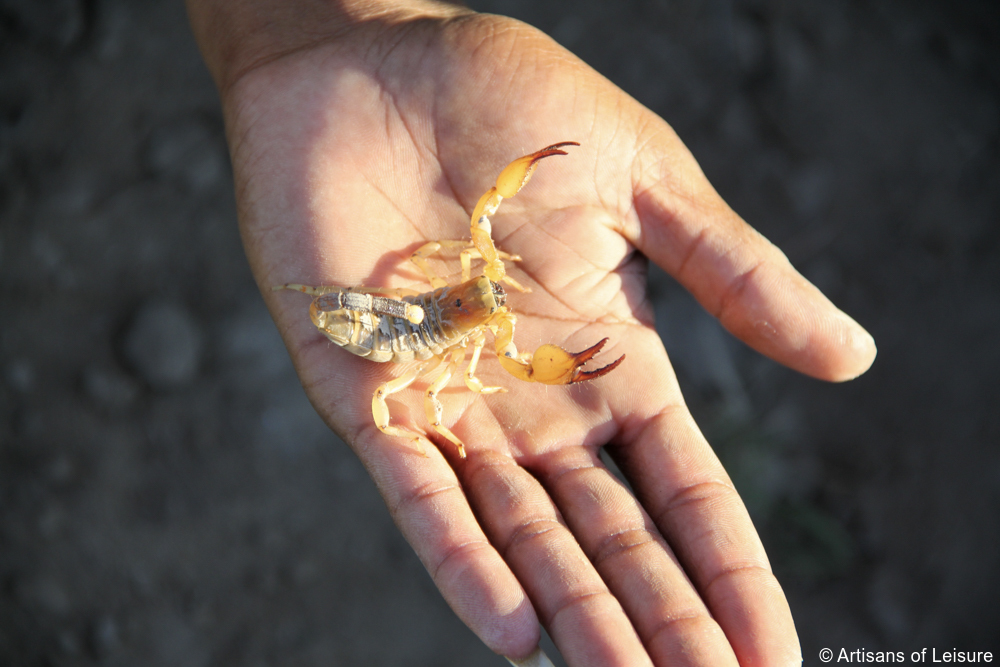
A tracker demonstrates how to start a fire without matches or lighters.
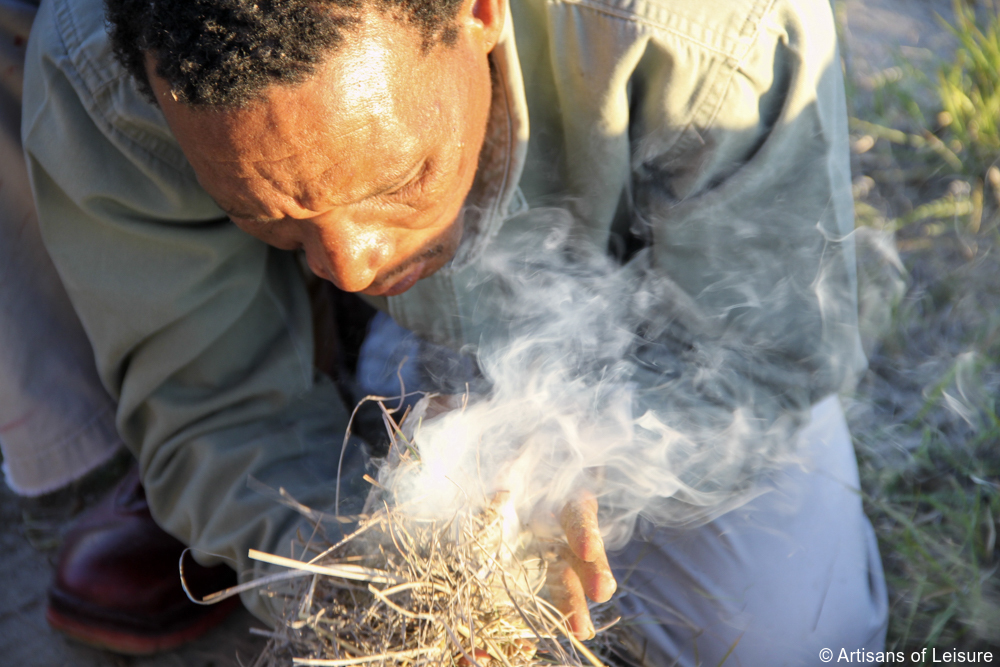
Game drives to see desert wildlife can be enjoyed throughout the year. The Kalahari is home to a wide variety of unique species, including bat-eared foxes, aardwolves and brown hyenas. Touring is with naturalist guides who are true experts and very passionate about the desert and its wildlife.
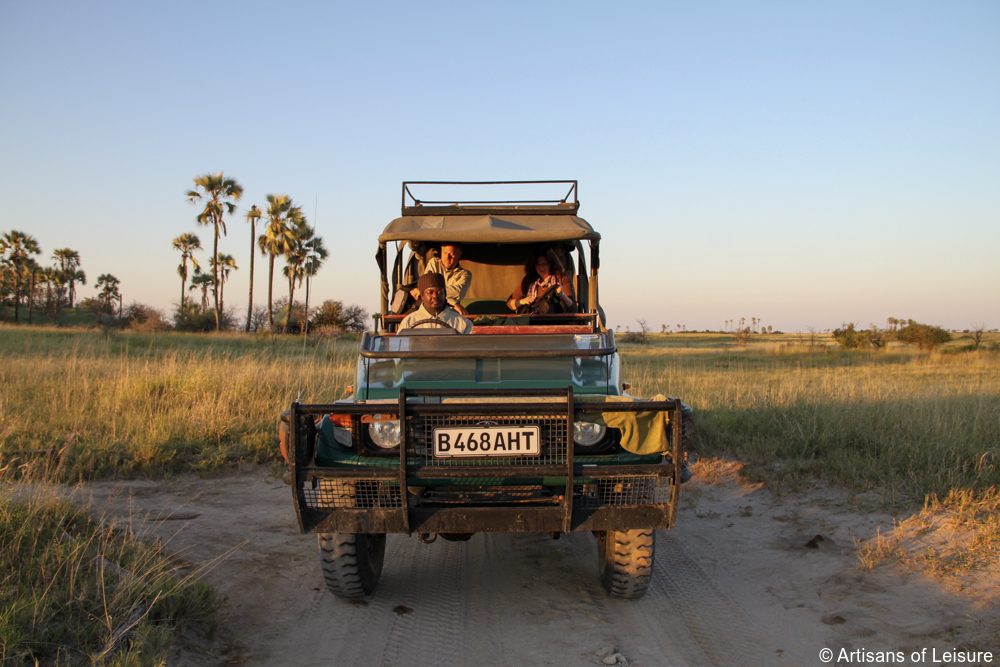
One of our favorite experiences is a game drive at sunrise followed by a delicious breakfast out in the pans.
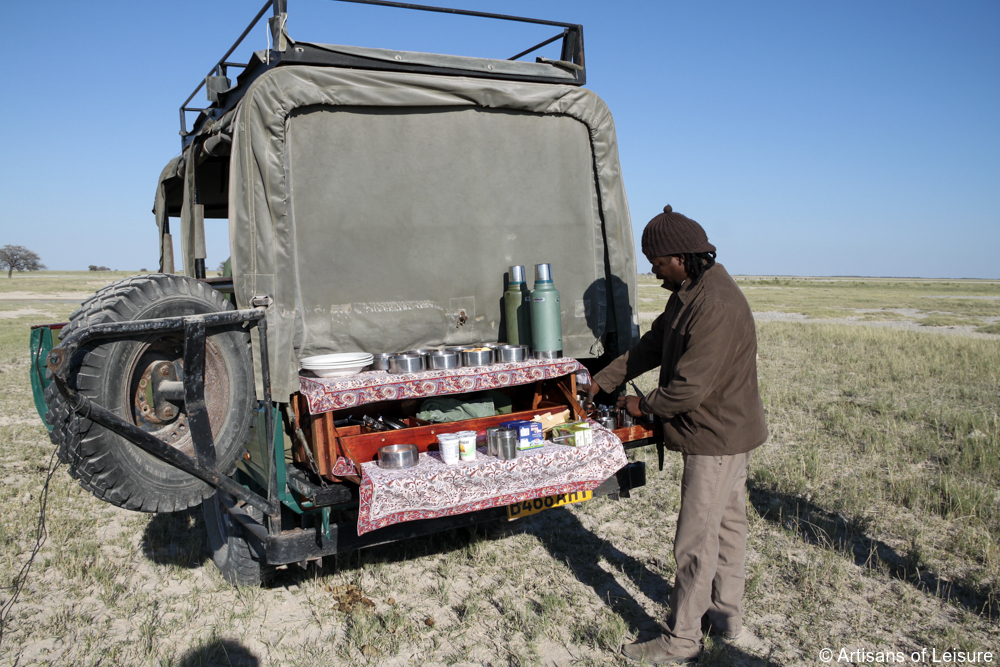
A guide showing a piece of dried blue-green algae, a source of food for the thousands of flamingos that migrate to the region every year. From November through May, the Makgadikgadi Pans are home to one of the largest populations of flamingos in Africa.

We spotted flocks of flamingos flying overhead…
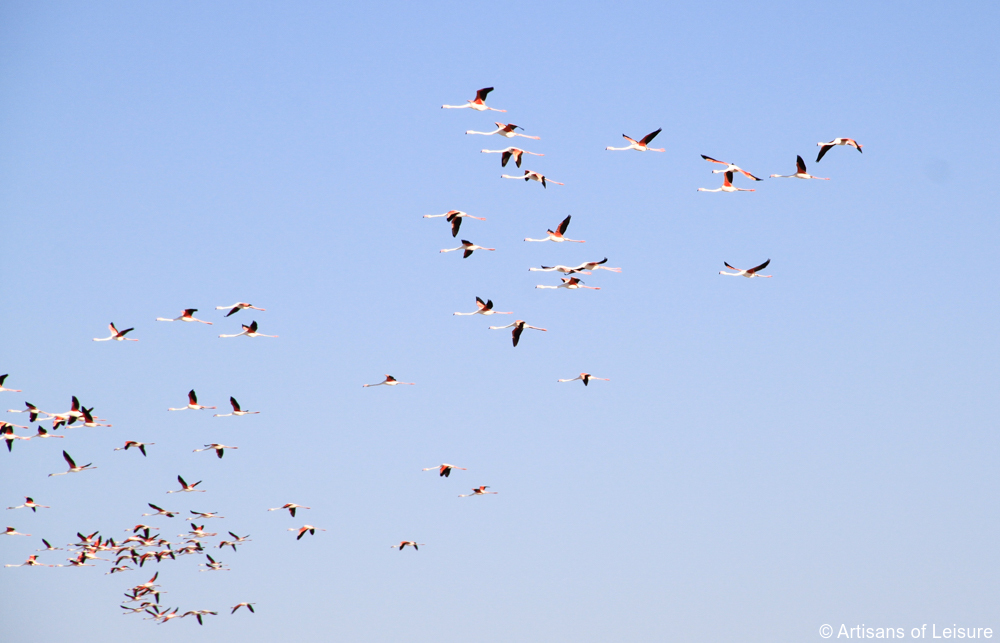
…and a wildebeest racing across a pan, while flamingos feed in a water hole in the background.
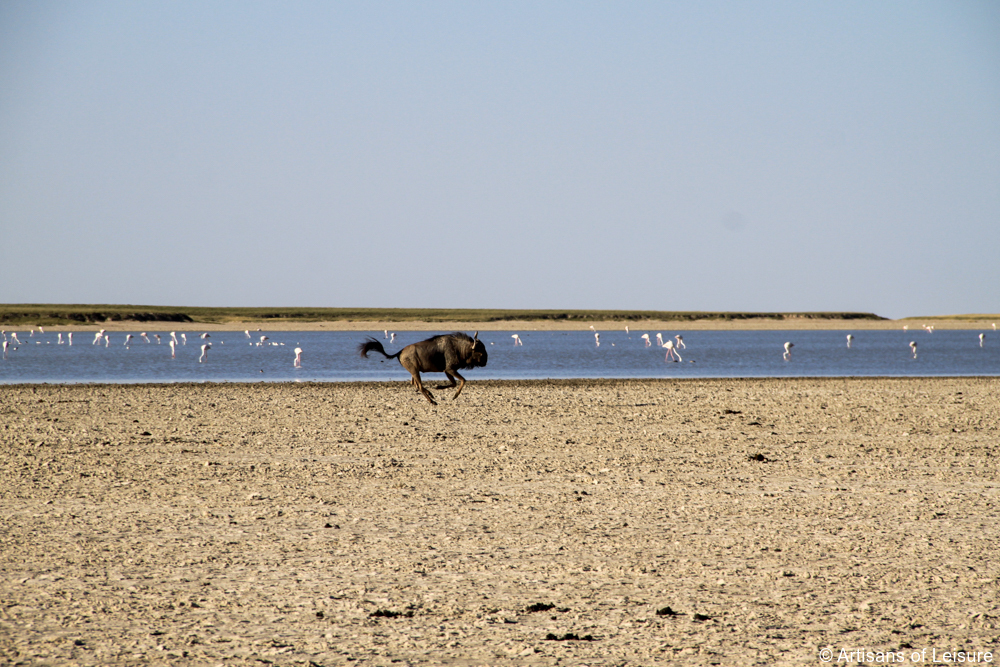
After the first rains, the desert is transformed, and large herds of Burchell’s zebra and blue wildebeest migrate into the pans to feed on the sweet grasses.
This is the second largest migration in Africa, with more than 30,000 animals making their way to the region. The migration is always followed closely by families of predators, including lions and cheetahs.
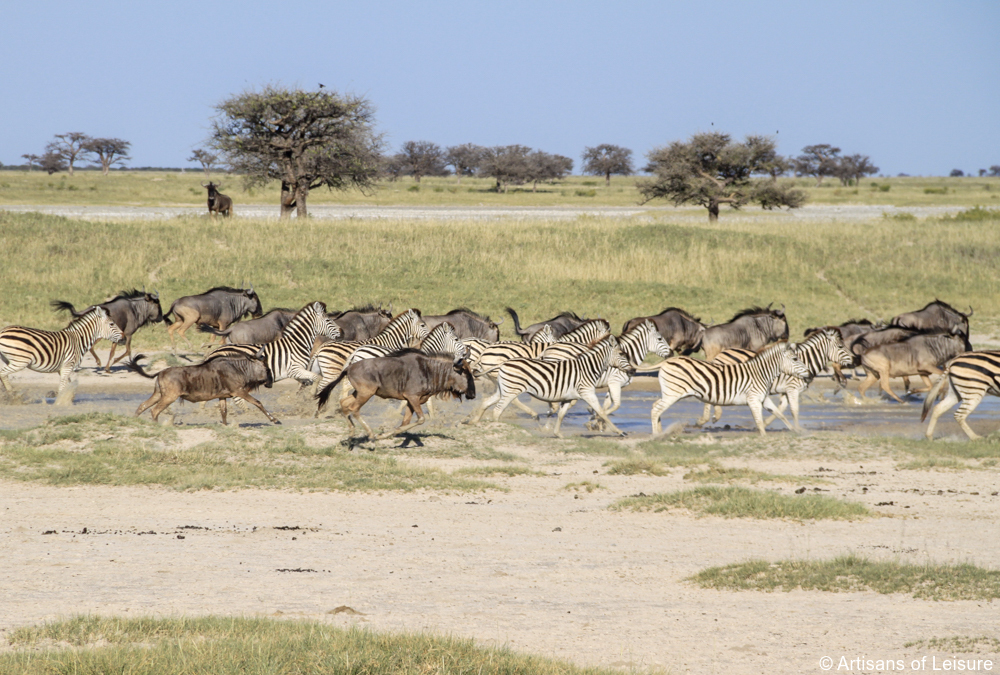
We were able to get up close to zebras in the grasslands.
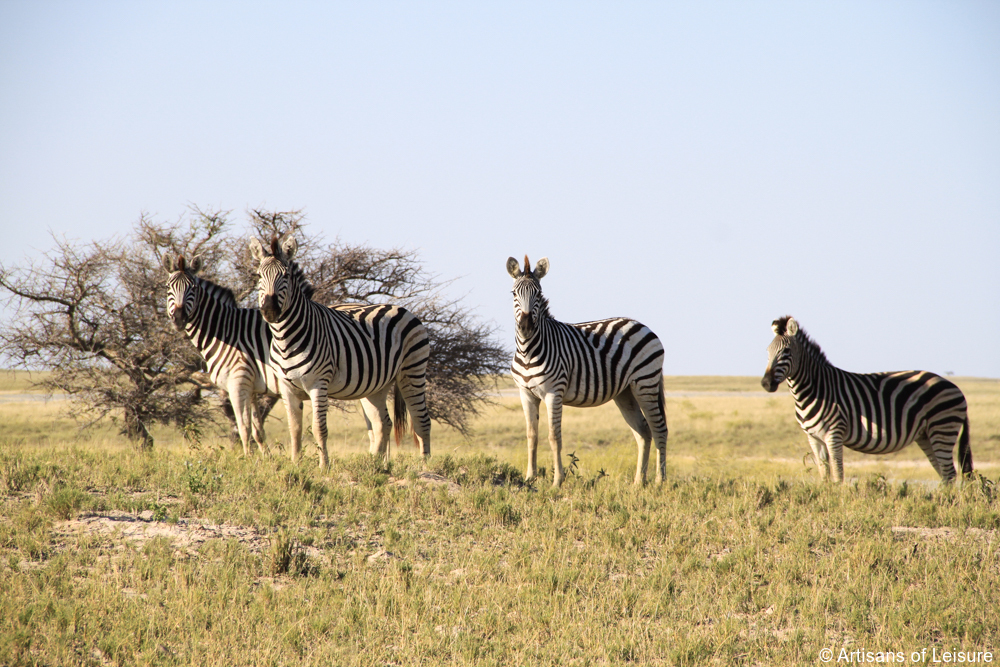
We were lucky with this rare daytime sighting of a nocturnal, bat-eared fox.
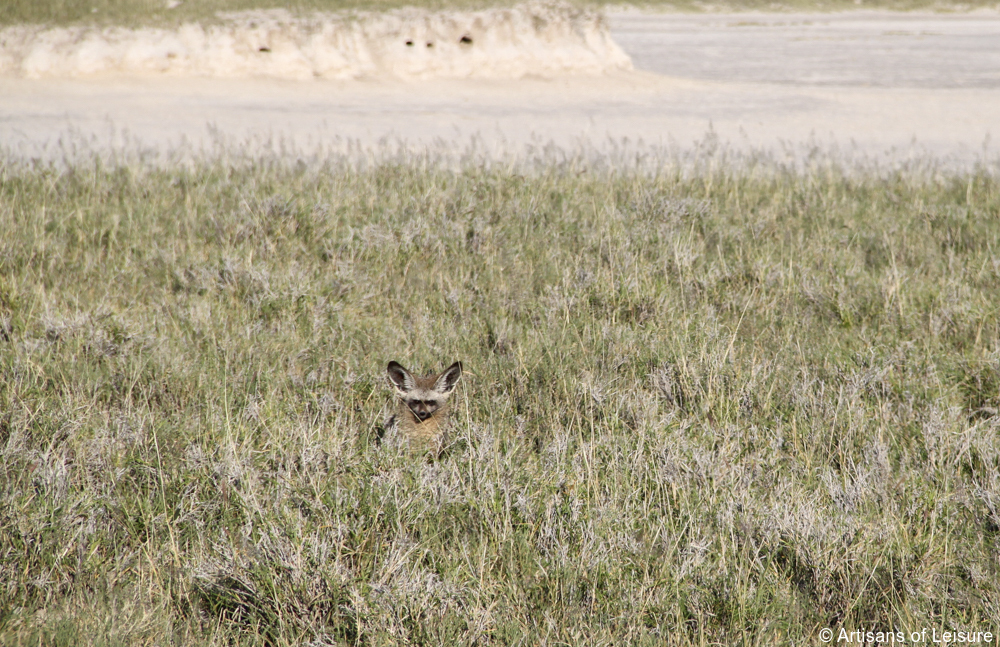
This zebra skin is evidence of a recent kill.
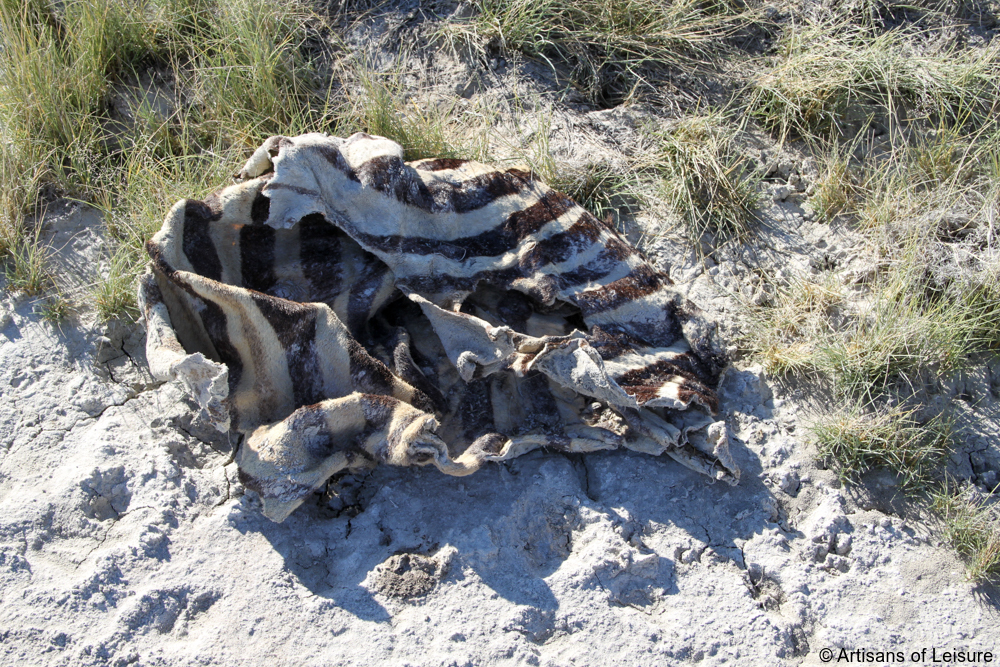
A family of ostriches makes the desert their home.
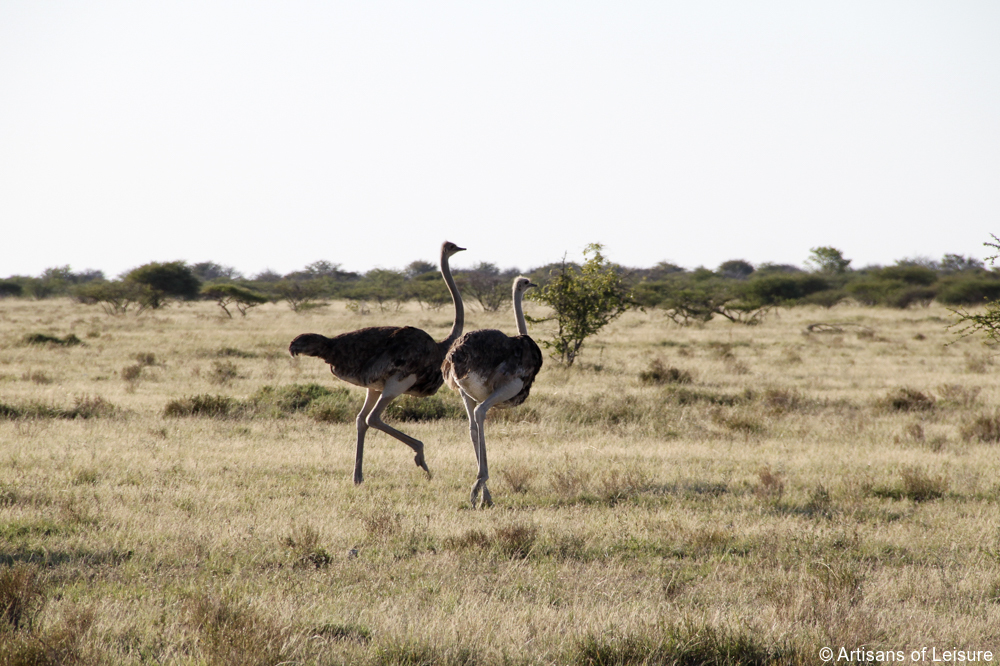
These yellow-billed hornbills were perched in a thorn tree.
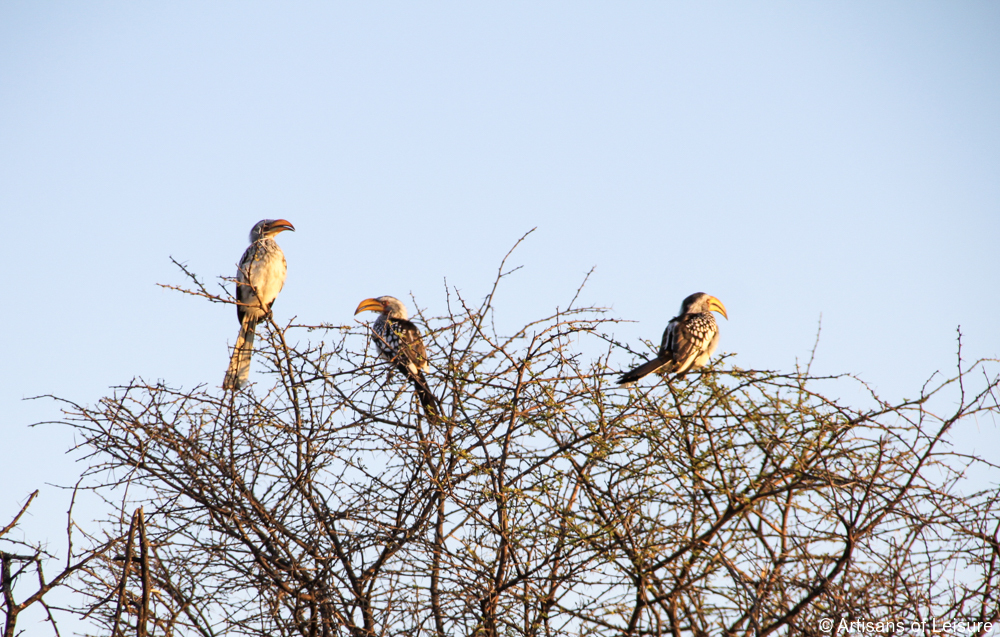
This is Chapman’s Baobab, an enormous baobab tree believed to be 4,000–5,000 years old and one of the largest trees in Africa. With few other trees around, the baobab has served as a historic landmark and navigational beacon for early explorers, including Dr. David Livingstone.
To get a sense of scale, look for Sonja, one of our travel specialists, standing next to the tree on the lower left.
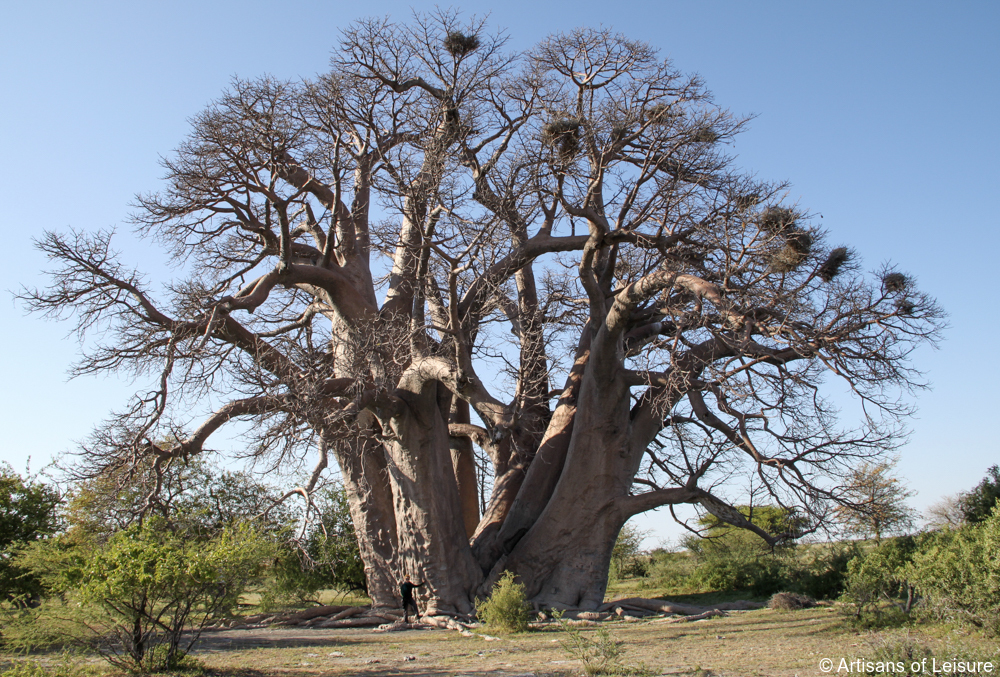
Sundowner cocktails in the pans is the perfect way to end the day.
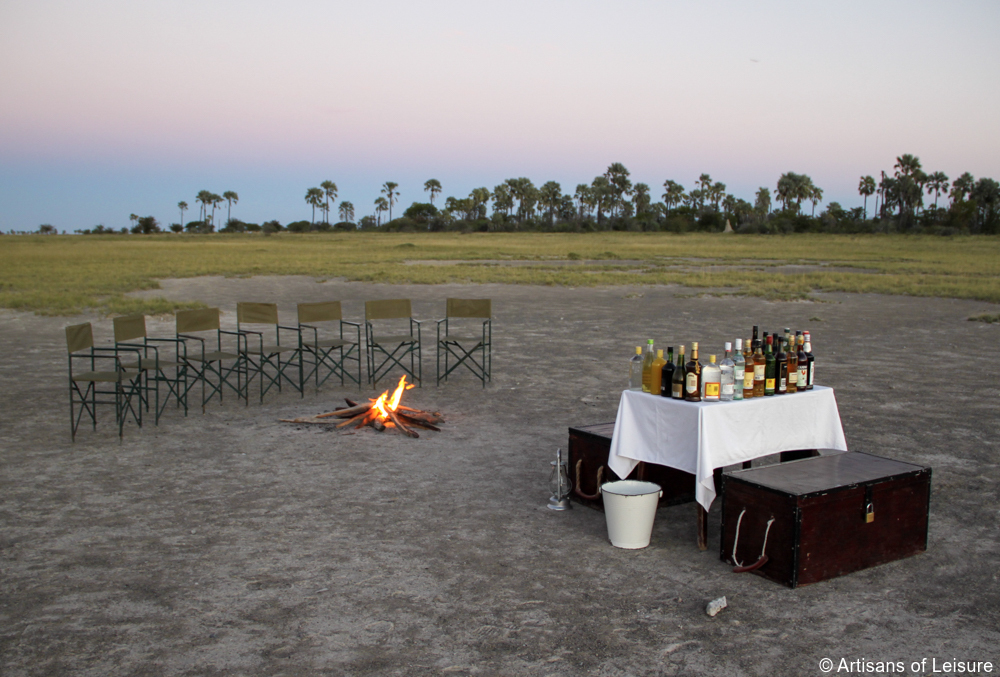
We enjoyed a lesson about the geography of Botswana and how the Makgadikgadi Pans were formed thousands of years ago.
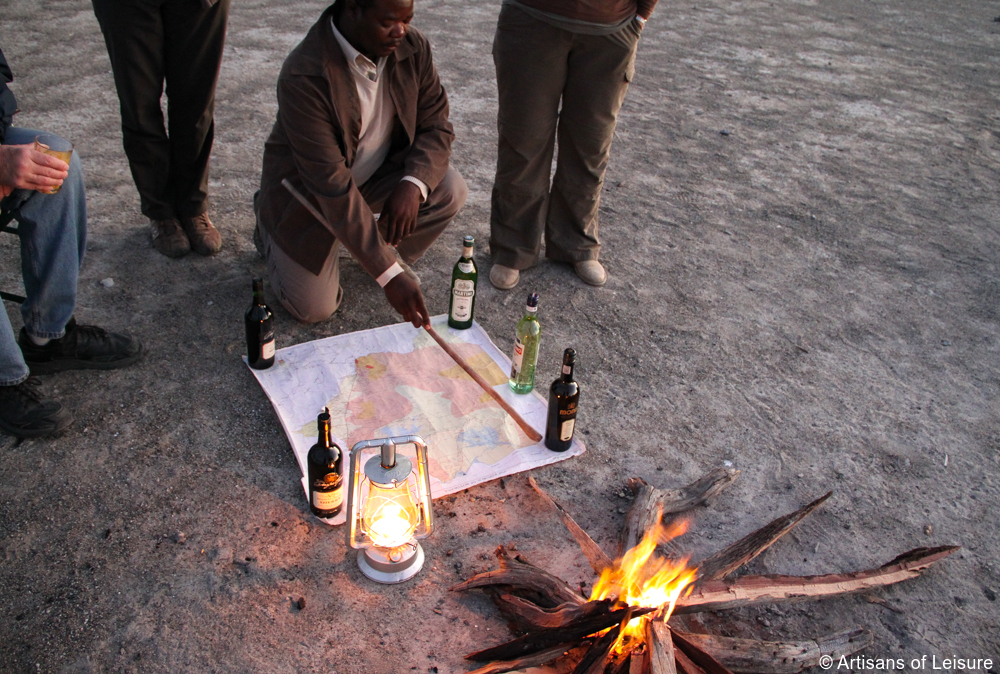
Back at camp, we enjoyed a fire and gourmet dinner under the stars.
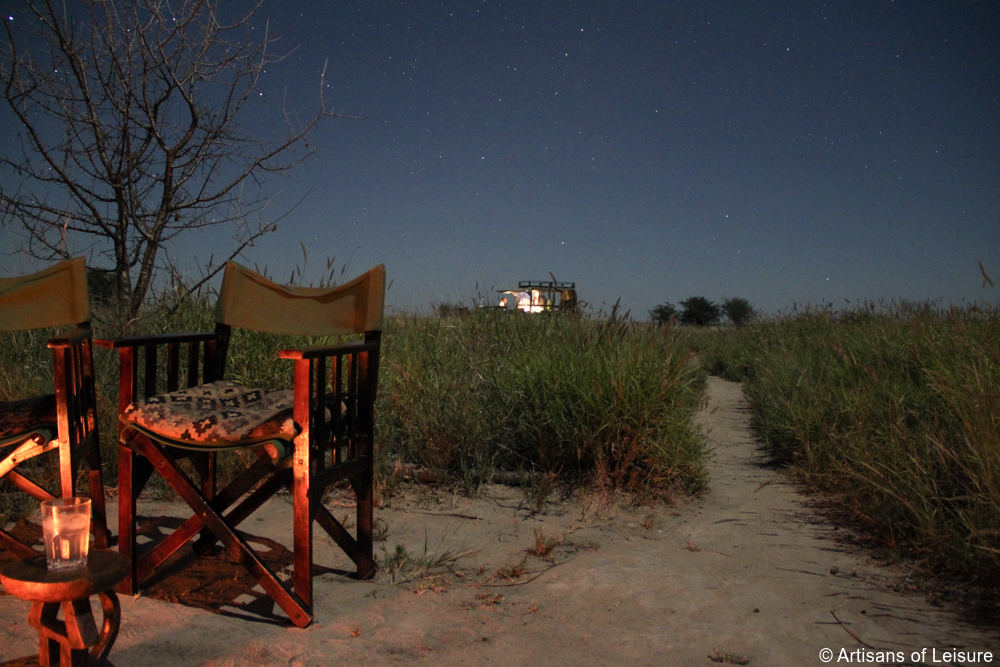
Contact Artisans of Leisure to learn more about our luxury safaris and tours in Botswana and Southern Africa.
Destinations: Botswana
Tags: Kalahari Desert, safari, tented camp, wildlife

 MENU
MENU
